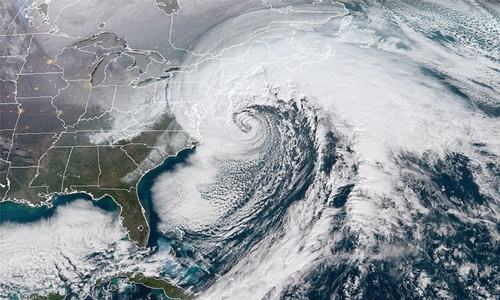Typhoons, Hurricanes and Cyclones: What’s in a name?
The devastation wreaked by Hurricane Michael, across the Florida-panhandle of USA this week, was too much of nature’s fury, to see. The video footage I watched on a website, shot by a drone, showed houses demolished, boats destroyed, streets flooded and cars pulverized; and any viewer can understand that the affected people must be emotionally shattered. Just a few days ago, Hurricane Florence had hit the Carolinas, in the same country. And now, here’s a new wave of destruction unleashed by Hurricane Michael. On India’s east coast too, this week, Cyclone Titli ruined the coastal regions of Andhra Pradesh and Odisha states.
Cyclone Luban made the landfall on the coast of Yemen, on 14 October. And, as I write this, Cyclone Leslie is slamming into Portugal. Super Typhoon Trami too, will hit southern Japan this weekend, and it could be very dangerous, according to some meteorologists. While Typhoons, Cyclones and Hurricanes are regional terms for the same devastating and destructive whirlwinds, the naming system itself, I thought, could be an interesting thing to investigate; for interested readers. After a bit of exploration for information in cyberspace, given below is a composition of what I found share-worthy. Until the 20th century, there was no proper International naming system.
The San Mateo Hurricane of 1565, which decimated the French fleet on its way to attack the Spanish settlement in St. Augustine (in current day Florida), got its name because it had made landfall a day after the feast of St. Matthew. The hurricane that devastated Galveston, Texas, in 1900, killing 6,000–12,000 people, is called the Great Galveston Hurricane; without any person’s name. Naming with people’s names started with Clement Wragge, an Australian meteorologist, who in the 1890s entertained himself by naming storms after women, mythical figures, and politicians that he did not like.
Following his method, according to Encyclopedia Britannica, meteorologists had continued using women’s names—often those of wives or girlfriends—instead of cumbersome designations based on latitude and longitude. As the names were short and quickly understood, and as they were easier to transmit over the radio, and easier to follow - if there was more than one storm in a given area - it became a norm. Since 1953, when the National Weather Service has put together, an alphabetical list of female names to be used, for storms in the Atlantic basin, it had become a practice. But male names were added to the list only since 1979, when women’s groups pointed out the sexism in the nomenclature.
Today, Male and female names are alternately used. A special committee of the World Meteorological Organization maintains lists of names to be used for tropical cyclones – around the world. The names on the list must be short, distinctive, and relevant to their cultural and geographic areas so that they are easy for people to remember. For the Atlantic basin there are six alphabetical lists of 21 names each, and the lists cycle yearly. So, it is very likely, that many of the names on the 2018 list, which starts with Alberto, Beryl, Chris, Debby, Ernesto, and Florence will recur in 2024.
Usually they leave out Q, U, X, Y and Z, as names starting with these letters are not easy to find. In the listing of Northern Indian Ocean tropical cyclone names, Bangladesh, India, Maldives, Myanmar, Oman, Pakistan, Sri Lanka and Thailand contribute by sending names. Cyclone Titli is an Indian contribution and Cyclone Luban is Oman’s contribution The only time that there is a change in these lists is when a storm is so deadly or so costly that the future use of its name would be inappropriate for reasons of sensitivity. The names would be retired. Names such as Katrina (USA, 2005), Mitch (Honduras, 1998), Tracy (Darwin, 1974), Haiyan (Philippines, 2013) and Sandy (USA, 2012) are all retired. I hope Hurricane Michael will retire too.
Related Posts

